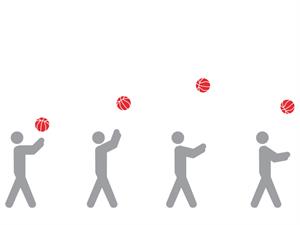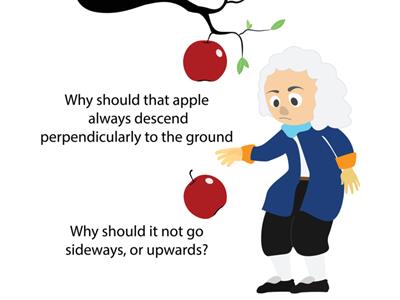
PUMPA - SMART LEARNING
எங்கள் ஆசிரியர்களுடன் 1-ஆன்-1 ஆலோசனை நேரத்தைப் பெறுங்கள். டாப்பர் ஆவதற்கு நாங்கள் பயிற்சி அளிப்போம்
Book Free DemoWhy doesn't the moon fall into the earth?
When we throw an object upwards, it reaches a maximum height and then falls downwards. The reason is earths gravity pulls the object towards it's centre.

A ball thrown upwards return back after reaching a certain height
It is said that once Newton was sitting under a tree, an apple fell on him. He starts thinking, why did the apple fall? Why cant it move up? He felt that: if the earth can attract an apple, can it not attract the moon?

Sir Isaac newton
He assumed that the same type of force is responsible in both cases. Finally, he concluded that, the moon is actually falling towards the earth at each point of its orbit instead of moving in a straight line. So, it must be pulled by the earth. But we do not actually see the moon falling towards the earth.
To understand this concept will discuss an activity.
- Tie a piece of thread to one of the ends of a small stone.
- Holding the thread at the other end, rotate the stone in a circular path at a constant speed.
- The stone moves in a straight line tangential to the circular path when it is released.
- This occurs because the stone continues to move in the same direction it was moving when it was released.
- The object moves in a tangential line to demonstrate how the stone's motion changes at each point.
This clearly shows that the direction of motion of that stone is changed at every point when it is moving along the circular path.
Therefore, we can say the uniform circular motions as,
If an object moves with constant speed in a circular path, then the motion is called uniform circular motion.
The gravitational force between earth and the moon acts as centripetal force.

Do you know what centripetal force is?
We will discuss about the centripetal force in the next topic.